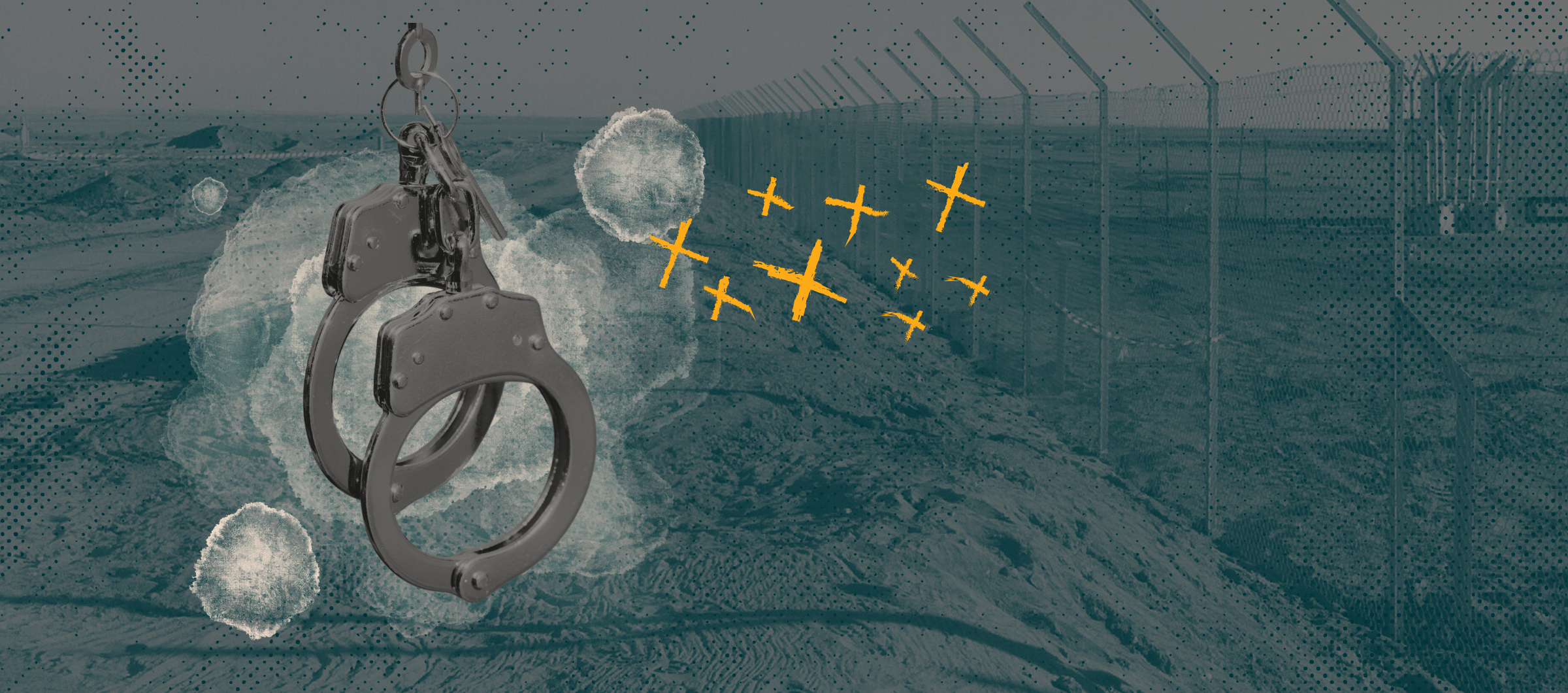In the second and final installment of “Fifty-two years of fear and failure," we detail the impacts of a state-based war on drugs and propose a way forward.
It’s no secret that Arizona’s public officials fully bought into the War on Drugs; it has overwhelmingly affected the state’s policy, public health, and law enforcement landscape for decades. What you may not know is that Arizona’s punitive response to drugs is even older than the nationwide campaign that caused exhaustive damage in the last 52 years.
Just after World War II, there was heated debate around drug use and smuggling in Arizona, largely due to Arizona’s border with Mexico. Both countries began to strengthen economic ties and the tourism industry flourished in the 1950s. At the same time, however, politicians capitalized on a fear-based narrative to generate public anxiety around illicit drugs at the border, even though rates of drug use were less than other parts of the U.S. This, combined with Nixon’s comments linked to race and political ideology, encouraged lawmakers in the state to pass stricter, more punitive legislation.
A new era of extreme drug policies
Former Governor Ducey declared a state of emergency in response to Arizona’s opioid crisis in 2017, but little has improved since then. By the end of 2023, there were 1,926 opioid overdose deaths and 6,048 people incarcerated for drug offenses. Six years after the emergency declaration, the state’s efforts have failed to curb the epidemic.
Even with a growing body of research showing that a public health approach is the only solution to address the U.S. drug epidemic, Arizona’s legislature has responded by heavily criminalizing drug use, trafficking, and paraphernalia to this day. In 2022 and 2023, lawmakers attempted to pass bills that would charge someone with murder if they shared drugs with someone who later died of an overdose. Other attempts have included creating specific sentencing guidelines for individuals convicted of selling fentanyl.
This year, lawmakers continued pursuing an onslaught of policies that are ineffective in saving lives. House Bill 2045 expanded the definition of dangerous drugs to include xylazine, and the 2024 budget diverted funds from the national opioid settlements to prisons rather than funding community-based treatment. Additionally, lawmakers used immigrants as scapegoats in their dangerous and ineffective war on drugs by passing HCR 2060, which could be on the ballot for voter consideration in November.
An extreme, anti-immigrant proposal, HCR 2060 would unconstitutionally grant state law enforcement agencies the authority to detain and deport people. Not only does it invite racial profiling and threaten communities across the state, but the ballot referral includes an unrelated section that increases mandatory minimum sentences for anyone selling fentanyl, regardless of their immigration status. Extremist lawmakers used the proposal as a vehicle to falsely equate xenophobia and anti-drug rhetoric with public safety.
The political games state lawmakers are playing come from an outdated, overused, and cruel playbook. Their failure to offer real solutions for impacted communities has led to economic turmoil and social fracturing through increased arrests, imprisonments, and far too frequently, death.
Bills that present public health solutions have been far and few between, with only a small handful of wins along the way. We cannot arrest our way out of Arizona’s overdose epidemic, and we must not blame immigrants for our state’s public health failures. Investing in treatment, resources, and support services is the only solution.
The case for harm reduction
The data from the public health and correctional departments in Arizona clearly shows that harsh, punitive policies do not benefit Arizona communities. A harm reduction model, on the other hand, would provide policies and programs that are humane, safe, and sensible.
What is harm reduction? There is no one-size-fits-all solution because every community, person, and circumstance is unique. However, some core principles include:
- Meeting people where they’re at, especially when it comes to substance use and addiction,
- Accepting that legal and illicit drug use is part of our world, and
- Making the choice to pursue solutions that minimizes the harmful effects of using drugs rather than simply ignoring and condemning them
Harm reduction in Arizona
Arizona has been slow to adopt these principles, but policies that reflect the harm reduction model include Senate Bill 1486, which removed misdemeanor penalties for possessing fentanyl test strips, which allowed counties to acquire and distribute them. Another example is Senate Bill 1250, which legalized needle exchange programs, increasing access to clean needles and reducing the potential of contracting diseases.
Other examples of harm reduction
The history of harm reduction can be traced back to Western Europe in the 1970s when HIV and AIDS were rapidly spreading. The Netherlands was the first country to implement a needle exchange program, offering free, clean needles for people who injected drugs (PWID) as an effort to slow the transmission of HIV, hepatitis C, and B. The program was successful and replicated in England and Scotland in 1986. During the 1980s, Merseyside and Chesire, UK became the focus of several different harm reduction programs, which included syringe exchange programs (SEPs). The Merseyside Harm Reduction Model included providing PWID and other people who use drugs with clean needles, unadulterated drugs, condoms, and education on how to avoid AIDS and other complications that come with using intravenous drugs.
These are just a few examples from many effective harm reduction efforts that have taken place nationally and internationally. Public health departments across the world have acted on a public health model rather than a strictly carceral model, and it’s time for Arizona to consider a different path forward.
Conclusion
The damage caused by the nation’s and state’s war on drugs may never be repaired, but communities deserve a fighting chance to heal. On a most basic level, this means decreasing the state’s reliance on incarceration and providing community-based resources. Harm reduction has proven to be the best possible way to accomplish that.
A commonsense measure Arizona can and should implement is defelonizing drug possession and paraphernalia, so that people aren’t saddled with unnecessary criminal penalties. Policies like this ensure public health workers can provide safe supplies to people who use substances and open a pathway to treatment. California, Utah, Connecticut, Alaska, and Oklahoma have all reclassified possession from a felony to a misdemeanor charge with promising results.
The bottom line: policies based on harm reduction play a significant role in preventing drug-related deaths and increasing access to healthcare, social services, and treatment. In order for harm reduction policies to be effective, elected officials must first accept that social problems — like substance use — cannot be treated in the criminal-legal system, but as public health matters that should be managed by public health professionals.
It is long past time to retire the racialized and classist War on Drugs, and focus on supporting communities instead.



